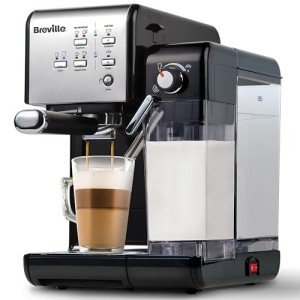10 Mobile Apps That Are The Best For Dual Boiler Espresso Machines

Understanding Dual Boiler Espresso Machines: A Comprehensive Guide
Espresso is an art as much as it is a science. For coffee enthusiasts and baristas alike, attaining the best shot of espresso requires accuracy and control over developing variables. One of the most efficient ways to attain this accuracy is through using dual boiler espresso machines. This post dives into the functionality, benefits, and factors to consider of dual boiler espresso machines for both novices and knowledgeable coffee aficionados.
What is a Dual Boiler Espresso Machine?
A dual boiler espresso machine features 2 different boilers: one for brewing espresso and the other for steaming milk. This design allows the user to brew coffee and steam milk simultaneously, attaining ideal temperature level control for both procedures. This is important for developing lattes, coffees, and macchiatos, where both ingredients are vital.
Table 1: Key Components of Dual Boiler Espresso Machines
| Element | Function |
|---|---|
| Espresso Boiler | Warms water to the ideal brewing temperature (around 190 ° F) |
| . Steam Boiler | Heats water to a greater temperature (around 250 ° F) for steaming milk. |
| PID Controller | Controls the temperature level of the boilers for precision developing. |
| Group Head | Where the coffee grounds sit and warm water goes through. |
| Steam Wand | Provides steam to froth milk. |
Advantages of Dual Boiler Espresso Machines
1. Simultaneous Brewing and Steaming
The most substantial advantage of dual boiler espresso machines is the ability to brew espresso and steam milk at the same time. This performance is especially helpful in busy environments, such as cafes, where speed and quality are paramount.
2. Consistent Temperature Control
Dual boiler machines often include innovative PID (Proportional Integral Derivative) controllers that keep a constant temperature throughout the developing procedure. Consistency is vital in espresso making to guarantee the very best extraction, hence boosting flavor and aroma.
3. Personalization and Versatility
With 2 separate boilers, users can personalize the temperature level settings for both espresso brewing and milk steaming. This suggests various types of coffee, such as lighter or darker roasts, can be prepared completely to match private taste profiles.
4. Suitable for Advanced Techniques
For those interested in latte art or other sophisticated techniques, a dual boiler espresso machine offers the flexibility to work with numerous milk textures while likewise extracting espresso. This versatility makes it an attractive option for baristas who want to sharpen their skills.
5. Longevity and Durability
Numerous dual boiler machines are constructed with high-quality materials developed for longevity. They are often made of stainless steel and feature durable components, making them a worthwhile financial investment for anybody major about coffee.
Disadvantages of Dual Boiler Espresso Machines
Despite their various advantages, dual boiler machines can have some downsides:
- Higher Cost: Dual boiler machines tend to be costlier than their single-boiler counterparts, which might not be suitable for casual coffee drinkers.
- Size and Space: These machines may occupy more countertop area than others, making them less perfect for small kitchen areas.
Table 2: Key Considerations When Choosing a Dual Boiler Espresso Machine
| Consideration | Explanation |
|---|---|
| Budget | Dual boiler machines can vary from ₤ 1,000 to over ₤ 4,000. |
| Size | Check your cooking area space before buying. |
| Brand name Reputation | Look for well-reviewed brands with excellent client support. |
| Functions | Consider what features are essential (e.g., PID controller, volumetric options). |
| Maintenance | Some machines may need more routine maintenance than others. |
Frequently asked questions
1. Are dual boiler espresso machines worth the financial investment?
Yes, they deserve the investment for severe coffee enthusiasts or professional baristas who value accuracy in espresso extraction and milk steaming.
2. How do I preserve a dual boiler espresso machine?
Routine maintenance includes descaling the machine, cleaning the group head, and ensuring that the steam wand is without milk residue. Seek advice from the manufacturer's manual for particular standards.
3. Can I use a dual boiler espresso machine for other brewing techniques?
Typically, dual boiler machines are designed generally for espresso. However, they can usually brew quality drip coffee and other designs with the ideal settings and adjustments.
4. What brand names are known for their dual boiler machines?
Some credible brands include La Spaziale, Breville, and ECM. Heat Exchange Espresso Machines has its own unique functions and rates.
5. What is the average life expectancy of a dual boiler espresso machine?
With proper care and maintenance, a dual boiler machine can last over a decade, making it a long-term financial investment for coffee lovers.
Dual boiler espresso machines represent the apex of espresso-making technology, merging art and science into one compact gadget. While they need a higher initial financial investment and more countertop area, the advantages they provide-- such as simultaneous developing and steaming, exact temperature level control, and toughness-- make them perfect for serious coffee lovers. Understanding the workings, benefits, and considerations for these machines will allow consumers to make educated decisions and raise their coffee brewing experience. Whether in your home or in a busy café, a dual boiler machine can really enhance the art of espresso.

